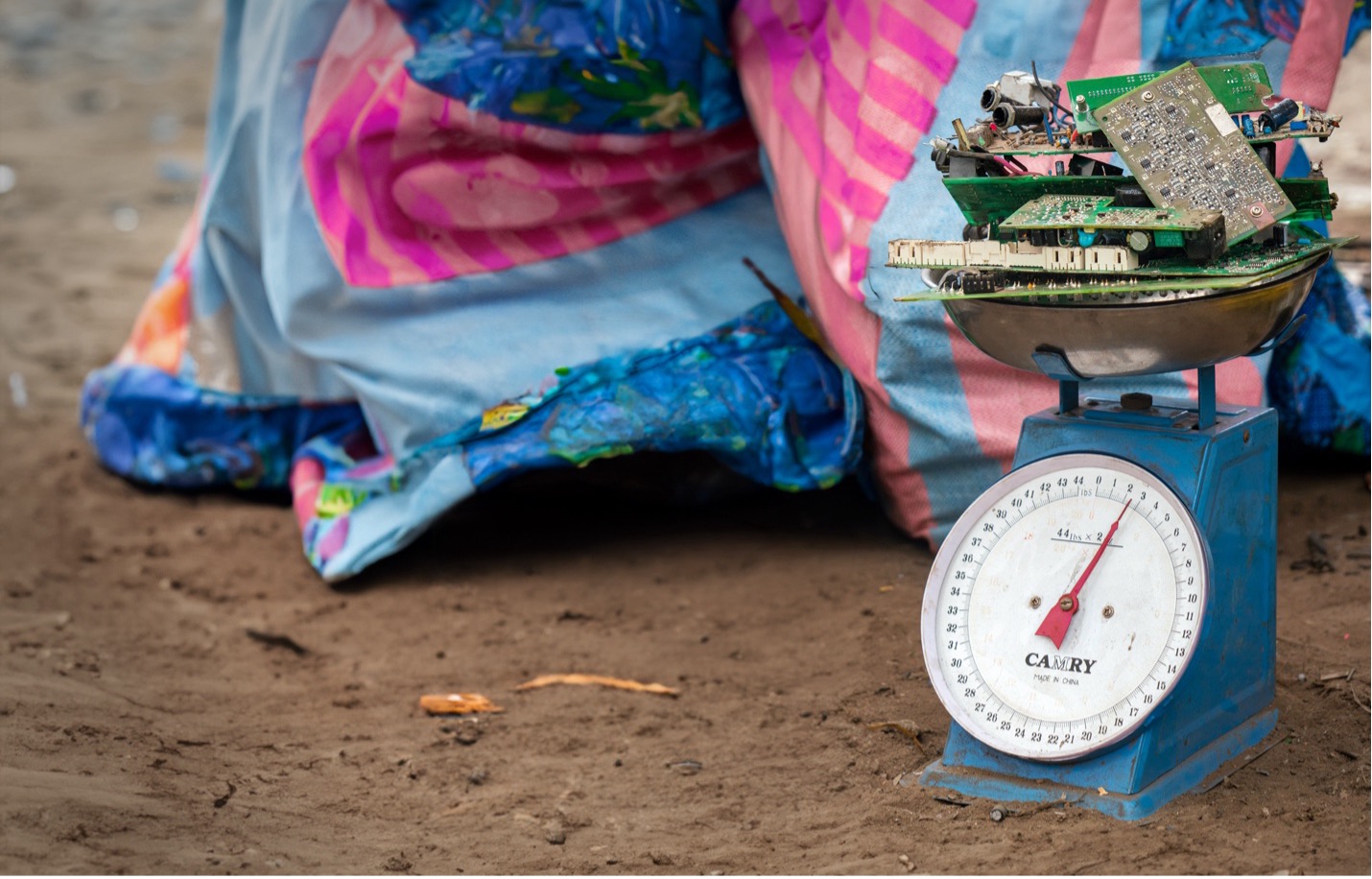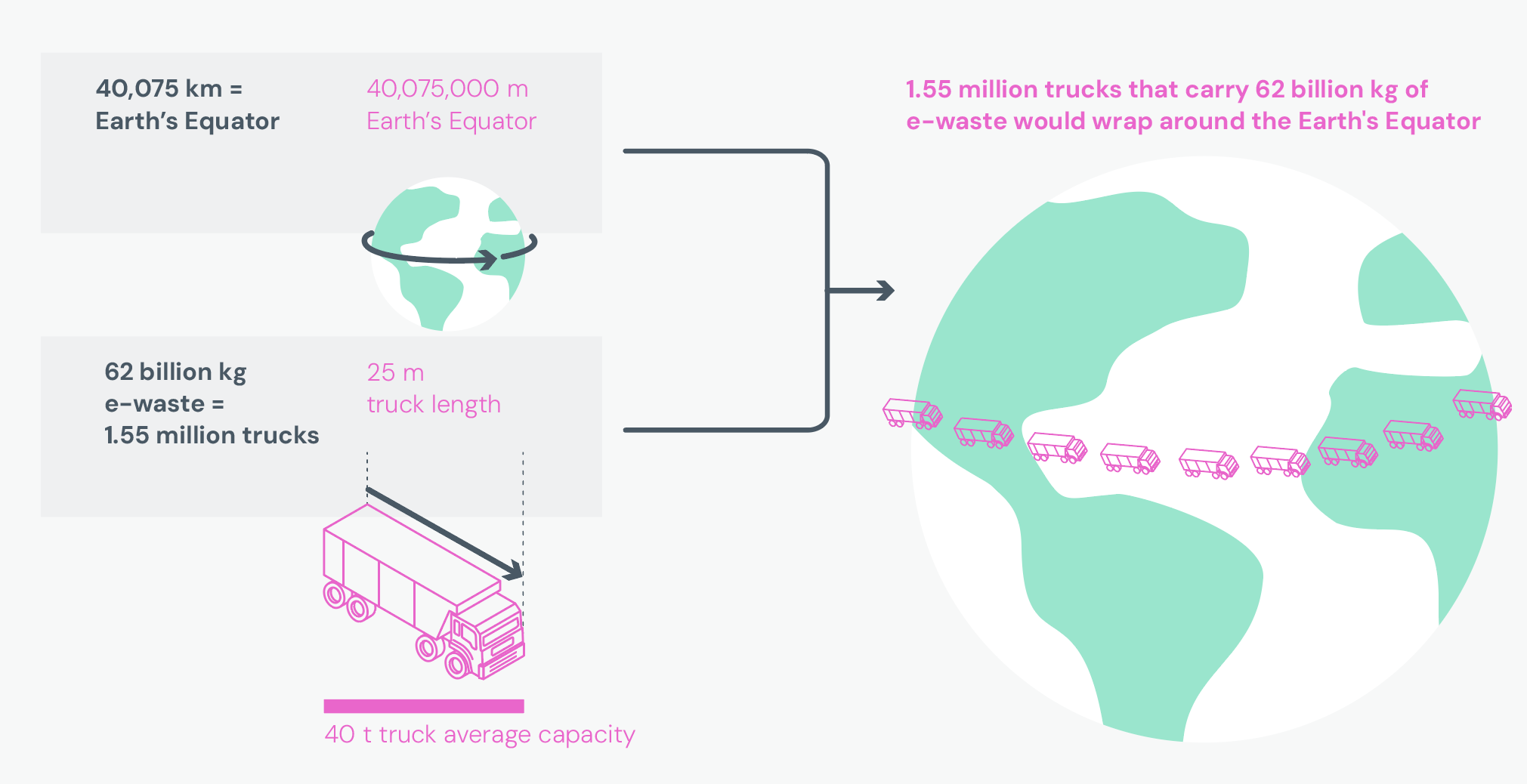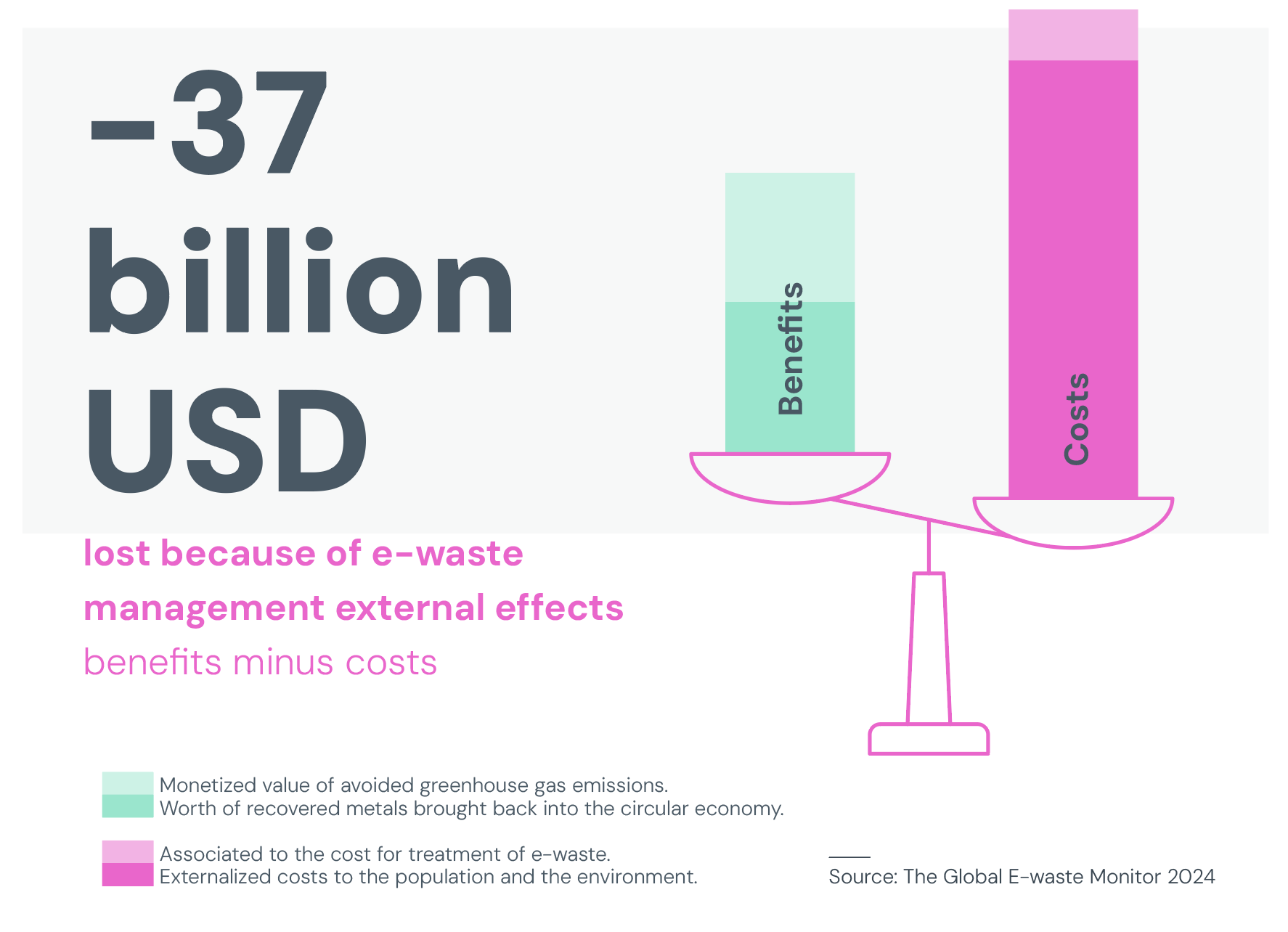
Background & Objectives
The Global E-waste Monitor (GEM) 2024 was launched 20 March 2024 and is the fourth edition of the Monitor. It is an indispensable reference tool for both policymakers and industry that shows the position of the world in terms of the global e-waste challenge.
The world is experiencing significant electronification and digital transformation. Many people own multiple electronic devices, and the increasing interconnectivity of urban and remote areas has led to a rise in the number of devices and objects linked to the Internet. This growth has seen a concomitant surge in the amount of Electrical and Electronic Equipment (EEE) and, subsequently, Waste Electrical and Electronic Equipment (WEEE) or e-waste.
When EEE is disposed of, it generates a waste stream that contains both hazardous and valuable materials, collectively known as e-waste, or WEEE. Since 2014, The Monitor has been the foremost source of reporting on this pressing issue, providing the most up-to-date overview of global e-waste data, statistics, and progress in policy and regulation. It also provides an outlook of what the future holds if things change or stay the same.
The Global E-waste Monitors attract significant media attention given the very relatable topic of electronics and e-waste to most people worldwide. The 2024 edition, in particular, saw substantial global coverage. In the first 12 hours after its release, the Monitor was captured in 1,438 articles, on 1,176 news sites, in 30 languages and across 80 countries. Some of the leading media outlets followed the story, including
CNN,
Associated Press,
Reuters,
Fortune and many others.
Key Findings & Statistics
In 2022, a record 62 billion kg of e-waste was generated globally (equivalent to an average of 7.8 kg per capita per year); 22.3 per cent of this e-waste mass was documented as formally collected and recycled in an environmentally sound manner.

From 2010 to 2022, both the amount of e-waste generated and the amount of e-waste documented to be formally collected and recycled have increased, from 34 billion kg to 62 billion kg, and 8 billion kg to 13.8 billion kg, respectively. Thus, since 2010, the growth of e-waste generation is outpacing the formal collection and recycling by almost a factor of 5.
Documented formal collection and recycling rates vary significantly across regions. In 2022, Europe was the region that generated the most e-waste (17.6 kg per capita) and had the highest documented collection and recycling rate (7.5 kg per capita), recycling 42.8 per cent of the e-waste generated. African countries had the lowest rate, with less than 1 per cent of e-waste being documented as formally collected and recycled.
E-waste Generated and Documented as Formally Collected and Recycled by Region in 2022.
The growth rate of countries implementing e-waste policy, legislation or regulation is decelerating, according to June 2023 data. Worldwide, 81 countries (or 42 per cent) currently have an e-waste policy, legislation, or regulation. This falls short of the ITU target of 50 per cent (97 countries) by 2023.
Number of Countries with E-waste Legislation, Policy, or Regulation.
Of the 81 countries covered by a national e-waste policy, legislation, or regulation, 67 applied the Extended Producer Responsibility (EPR) principle, 46 had enshrined national e-waste collection targets in their regulations, and 36 had done so for e-waste recycling targets at the national level. It is essential to legislate such targets to monitor progress and stimulate the collection and recycling of e-waste.
The overall economic impact of e-waste management in 2022 was a loss equivalent to USD 37 billion. The main costs consist of USD 78 billion in externalized costs to the population and the environment, stemming from lead and mercury emissions, plastic leakages, and contributions to global warming, particularly in cases where hazardous substances are not properly managed.
Four 2030 projections and future scenarios for e-waste management were developed, which include (1) business as usual, (2) progressive, (3) ambitious, and (4) aspirational.
It is projected that 82 billion kg of e-waste will be generated in 2030. In a business as usual scenario, documented formal collection and recycling rates will decline to 20 per cent in 2030. With documented formal collection and recycling rates at 22.3 per cent in 2022, the world would not be able to meet the 30 per cent target for 2023 set by ITU.
Partners
The Global E-waste Monitor 2024 is funded, and prepared in partnership, by the UNITAR SCYCLE Programme, ITU and Fondation Carmignac. The authors would like to thank the United Nations Environment Programme for the additional financial contribution, the cooperation with data collection and the overall support towards the development of this Monitor.
ITU and UNITAR have joined forces in the Global E-waste Statistics Partnership (GESP). The GESP collects data from countries in an internationally standardized way and ensures that this information is publicly available via its open-source global e-waste database (
www.globalewaste.org). Since 2017, the GESP has substantially boosted national and regional capacities to produce e-waste statistics in various countries. Ultimately, it supports national efforts to compile e-waste statistics that are useful for national policymaking using an internationally recognized, harmonized measurement framework.
Disclaimer: The designations employed and the presentation of material on this map do not imply the expression of any opinion whatsoever on the part of ITU and of the Secretariat of ITU concerning the legal status of the country, territory, city or area or its authorities, or concerning the delimitation of its frontiers or boundaries.